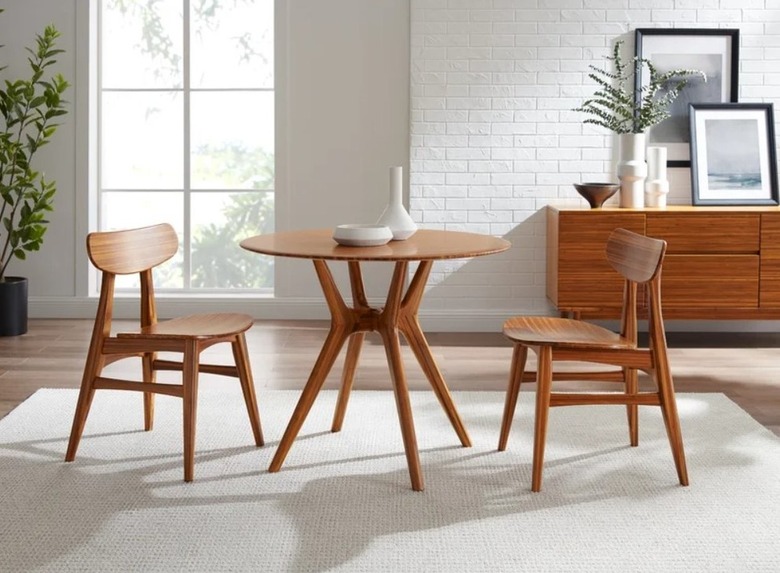How To Paint Bamboo Furniture
We may receive a commission on purchases made from links.
As with just about any hard-surface furnishings, painting bamboo furniture works best if the bamboo is cleaned and sanded a little first. Spray paint works perfectly well on bamboo, and it's often easier to manage than working a brush into all the nooks and grooves. Applying a spray primer before painting also helps the paint adhere better, resulting in a more durable finish.
Clean the Bamboo
Clean the Bamboo
Cleaning the bamboo helps the paint adhere better while also giving you a chance to check the furniture's condition up close. Remove any cushions and wipe off dust with a soft cloth, especially if the piece hasn't been used in a while or if it has been kept outdoors or in a dusty area. Add a squirt of dish soap into a bucket of warm water and then dip a cloth or sponge into the soapy water, wringing out most of the liquid because too much moisture could harm the bamboo. Wipe down the piece thoroughly and then wipe it again with a damp cloth containing no soap.
If the piece is a little dirtier in some areas, dip a nylon-bristle brush or a soft toothbrush into the soapy water, shake out the excess, and then scrub the bamboo, wiping up drips as you work. For any stains, such as mildew spots, a nylon scrub pad helps remove the marks. If the bamboo finish looks a bit shiny or almost oily even after cleaning it up, wipe it down with a little rubbing alcohol on a rag. Make sure the bamboo is completely dry before sanding it.
Sand as Needed
Sand as Needed
If the current finish is chipping or flaking off the bamboo, sanding helps remove more of the coating that would otherwise come off after you paint it, taking the new paint with it. Sanding also helps remove whatever protective top coat might be on the piece if it's fairly new. Use fine-grit sandpaper or a sanding sponge to remove the flaking finish; if necessary, switch to a medium grit.
Sand away any rough areas, such as coarse areas on the bamboo's nodes or knuckles, to smooth out splintering areas along cut edges. Wipe off all sanding dust with a clean rag or a tack cloth.
Prime the Bamboo
Prime the Bamboo
Unless you're using an all-in-one product that has both paint and primer, apply spray primer to make the paint adhere better. Any spray primers for wood or cane furniture also work on bamboo. Set the furniture on a plastic tarp in a well-ventilated area, such as an open garage or patio, on a nonwindy day. If you're in an area where overspray could be an issue, set a large cardboard box or another tarp behind the piece, moving it as you work to catch the errant primer.
Shake the can as directed on the label, hold the can about 12 inches away, and paint the bamboo using even arm motions to make overlapping rows of primer on the bamboo. Start each burst of spray slightly before the piece and end it slightly after for the best results, as this also helps prevent splotches on the finish. Once the primer dries, apply a second coat if the label recommends it.
Paint the Bamboo
Paint the Bamboo
Spray paint the bamboo in any color you like using the same technique as applying the spray primer. The furniture should be atop a tarp in a well-ventilated area or outside on a nonwindy day and blocked off from anything that might accidentally get sprayed. Wearing rubber gloves helps protect your hands from the paint.
Apply two to three coats for the best coverage, which may require more than one can of spray paint. Allow each coat to dry for at least 30 minutes or as long as is recommended on the paint can label. Different formulations have different recommendations, so it's important to follow the manufacturer's suggestions. If you plan to keep the furniture outdoors, a clear UV-blocking sealer over the paint offers added protection. Read the paint manufacturer's suggestions for a sealer that works well with your specific spray paint formula.
